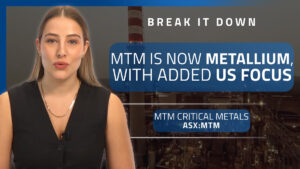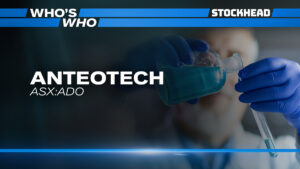Whatever happened to HIPO’s most marvellous battery?

Pic: Vertigo3d / E+ via Getty Images
HIPO Resources (ASX:HIP) may have lost a long shot bet made in 2018 that an experimental new technology out of Ukraine could make its fortune.
In August 2018, the then-hopeful African resources explorer said it might be onto the next big thing in batteries: a technology that could “double the EV [electric vehicle] driving range” and double the energy density of a lithium battery.
The idea was to invest in the end point of a battery metals supply chain it hoped to begin in deepest Africa, the politically fraught Democratic Republic of Congo (DRC).
HIPO had bought 25 per cent of Next-Battery, a subsidiary of a Gibraltar-registered company that houses a variety of technologies including the Ukranian energy tech, for $US500,000 ($827,176).
NextMetals, the parent, is run by a silver-tongued American named Benton Wilcoxon.
He’s got a long track record of applying for patents for Ukranian technologies and convinced Hipo chair Maurice Feilich, a stockbroker with Sanlam Private Wealth, to invest on the back of studies and the advice of an independent expert only.
No prototype, no money, no patents
But two and a half years on there is little to show for the money spent in 2018.
A prototype was expected, by NextMetals and HIPO, by the end of 2019.
Neither Feilich nor Wilcoxon responded to queries before publication.
Wilcoxon and a team of Ukranians have applied for battery-related patents before, in the 1990s, as per the World Intellectual Property Organisation (WIPO) and the European patent office.
There are no recent entries in either entity for patent applications for the latest technology.
In 2018, HIPO also took out an option to buy an extra 10 per cent of Next-Battery for $US1m, and issued 10 million shares in itself if the Ukranian tech met two milestones.
But it appears HIPO is not willing or able to invest the extra: Next-Battery has been looking for “strategic” new funding to complete a prototype since May last year.
When HIPO invested it had $1.7m in cash. Today it has slightly less than $500,000.
Its other assets are stakes in stalled Uganda phosphate and a Democratic Republic of Congo lithium project which was bought a couple of weeks before the Next-Battery investment.
It is currently looking for new projects.
The next big thing
Next-Battery was promising a film that, when laid over metals like lithium or cobalt, would increase the surface area and therefore the volume of electrons that could move to the cathode. On paper that should then increase the energy density of the battery and voila, make it more powerful for longer periods.
The conductive film could be built up in a lattice structure in nano-layers.
At the time HIPO invested it hadn’t been tested on a cathode, or in a completed battery.
In the months after HIPO invested, Next-Battery said it was linking up with Warwick Manufacturing Group, a Chinese company called Lvchi Auto which popped up and disappeared in 2018, and the makers of the hyper-futuristic Dendrobium car.
By May last year Next-Battery had also become side-tracked from its original film concept to nine projects, including developing a manufacturing process for an electrolyte for solid-state batteries and making a vanadium ion battery.
Don’t be sucked in by big battery promises
There are countless projects to develop new batteries, improve existing batteries, and even turn air into a battery. Most have been “coming soon” for years.
But there is a reason why startling new technologies on paper rarely make it past real life testing, and that’s because scientists don’t fully understand why existing chemistries work.
For example, changing one part such as a nanolayer on a positively charged anode can have massive ramifications that only appear once the battery has been charged and run down hundreds of times.
Battery improvements over the last two decades have largely come from existing companies making incremental changes.
A cautionary tail is the story of Envia, a US startup that appeared in 2012 to have solved the same problem Next-Battery was promising: more energy density, more range, more power.
But the experimental materials on the electrodes weren’t fully understood and the magical lithium battery that could store twice as much energy as a regular one only ever worked on one prototype.
They never were able to figure out whether it was the precise level of coatings of different materials on the electrodes that did the trick, or whether a minute contaminant was the solution to the world’s battery problems.
Related Topics
UNLOCK INSIGHTS
Discover the untold stories of emerging ASX stocks.
Daily news and expert analysis, it's free to subscribe.
By proceeding, you confirm you understand that we handle personal information in accordance with our Privacy Policy.








